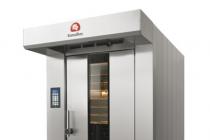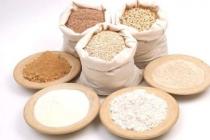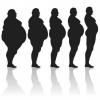The type of higher nervous activity is based on the individual characteristics of the course in two ways: and inhibition. According to the views of I.P. Pavlov, there are three main properties of nervous processes:
1) The strength of the processes of excitation and inhibition (associated with the performance of nerve cells).
The strength of excitation processes characterized by: high performance; initiative; decisiveness; courage; courage; perseverance in overcoming life's difficulties; the ability to solve difficult situations without disruption of nervous activity.
The strength of the braking processes characterized by: self-control; patience; a high ability to concentrate, to differentiate the permissible, the possible from the unacceptable and impossible.
Weakness of nervous processes characterized by: low performance; increased fatigue; weak endurance; indecisiveness in difficult situations, and the rapid onset of neurogenic breakdowns; the desire to avoid difficulties, obstacles, active work and stress; little initiative; lack of perseverance.
2) (associated with the ratio of the processes of excitation and inhibition in terms of their strength).
Balance of nervous processes characterized by: smooth and attitude towards people; restraint; the ability to self-control, concentration, expectation; the ability to fall asleep easily and quickly; smooth speech, with correct and expressive intonation.
Unbalance with a predominance of excitation characterized by: increased impressionability; nervousness, and in a strong type this is expressed in a tendency to scream, in a weak type - in withdrawing into oneself, in tearfulness; restless with frequent nightmarish content; fast speech (patter).
3) Mobility of the processes of excitation and inhibition (associated with the ability of nervous processes to replace each other).
Mobility of nervous processes characterized by: a fairly easy and quick transition to a new business; rapid alteration of habits and skills; ease of falling asleep and waking up.
Inertia of nervous processes characterized by: the difficulty of transition to a new business and alteration of habits and skills; difficulty waking up; calm with dreams without nightmares; slow speech.
On the basis of all possible combinations of the three basic properties of nervous processes, a great variety is formed. According to the classification of I.P. Pavlov, there are four main types of GNI , differing in resistance to neurotic factors and adaptive properties.
1) Strong, unbalanced , ("unrestrained") type characterized by strong excitatory processes that prevail over inhibition. This is a person who is addicted; with a high level of activity; vigorous; hot-tempered; irritable; with strong, quickly emerging, clearly reflected in speech, gestures, facial expressions.
2) Strong, balanced, mobile (labile or live) type is different strong processes of excitation and inhibition, their balance and the ability to easily change from one process to another. This is a man with great self-control; decisive; overcoming difficulties; vigorous; able to quickly navigate in a new environment; mobile; impressionable; with a bright expression and their easy changeability.
3) Strong, balanced, inert (calm) type characterized strong processes of excitation and inhibition, their balance, but low mobility of nervous processes. This is a very efficient person; able to restrain; calm; slow; with a weak manifestation of feelings; difficult to switch from one activity to another; does not like to change his habits.
4) Weak type is different weak excitatory processes and easily occurring inhibitory reactions. This is a weak-willed person; sad; dreary; with high emotional vulnerability; suspicious; prone to gloomy thoughts; with a depressed mood; closed; shy; easily influenced by others.
These types of higher nervous activity correspond to the temperaments described by Hippocrates:
|
Properties of nervous processes |
Temperaments (according to Hippocrates) |
|||
|
sanguine |
Phlegmatic person |
Melancholic |
||
| Equilibrium |
Unbalanced, with a predominance of the excitation process |
Balanced |
Balanced |
|
|
Mobility |
Mobile |
Inert |
||
However, such “pure” ones are rare in life, usually the combination of properties is more diverse. I.P. Pavlov also wrote that between these main types there are “intermediate, transitional types and you need to know them in order to navigate in human behavior.”
Along with the indicated types of GNI common to humans and animals, I.P. Pavlov singled out specifically human types (private types) based on the different ratio of the first and second signal systems:
1. Art type of characterized by a slight predominance of the first signal system over the second. Representatives of this type are characterized by an objective, figurative perception of the surrounding world, operating in the process with sensual images.
2. thinking type differs in the predominance of the second signal system over the first. This type is characterized by a pronounced ability to abstract from reality, to a subtle analysis; operating in the process of thinking with abstract symbols.
3.Medium type characterized by the balance of signal systems. Most people belong to this type, they are characterized by both figurative and speculative conclusions.
This classification reflects the nature of the functional interhemispheric asymmetry of the brain, the features of their interaction.
The doctrine of the types of higher nervous activity is important for understanding the patterns of formation of such important psychological characteristics of a person as temperament and character. The type of GNI is the physiological basis of temperament. However, the type of GNI can be reduced to temperament, because the type of GNI is a physiological property of a person, and temperament is a psychological property of a person and is related to the dynamic side of a person’s mental activity. It should be remembered that temperament does not characterize the content side of the personality (a person's worldview, beliefs, views, interests, etc.). Features of the GNI type and the prevailing temperament form the natural basis of the individual uniqueness of the personality.
Higher nervous activity- this is a set of unconditioned and conditioned reflexes, as well as higher mental functions that provide adequate behavior in changing natural and social conditions. For the first time, the assumption about the reflex nature of the activity of the higher parts of the brain was made by I.M. Sechenov, which made it possible to extend the reflex principle to human mental activity. The ideas of I.M. Sechenov received experimental confirmation in the works of I.P. Pavlov, who developed a method for objective assessment of the functions of the higher parts of the brain - the method of conditioned reflexes.
IP Pavlov showed that all reflex reactions can be divided into two groups: unconditioned and conditional.
CLASSIFICATION OF TYPES OF HIGHER NERVOUS ACTIVITY.
Unconditioned reflexes : 1. Congenital, hereditary reactions, most of them begin to function immediately after birth. 2. They are specific, i.e. common to all members of this species. 3. Permanent and persist throughout life. 4. Carried out at the expense of the lower parts of the central nervous system (subcortical nuclei, brain stem, spinal cord). 5. Occur in response to adequate stimuli acting on a specific receptive field.
Conditioned reflexes: 1. Reactions acquired in the process of individual life. 2. Customized. 3. Fickle - can appear and disappear. 4. They are predominantly a function of the cerebral cortex. 5. Arise on any stimuli acting on different receptive fields.
Unconditioned reflexes can be simple or complex. Complex innate unconditioned reflex reactions are called instincts. Their characteristic feature is the chain nature of reactions.
According to the teachings of IP Pavlov, the individual characteristics of behavior, the dynamics of the course of mental activity depend on individual differences in the activity of the nervous system. The basis of individual differences in nervous activity is the manifestation and correlation of the properties of the two main nervous processes - excitation and inhibition.
Three properties of excitation and inhibition processes have been established:
1) the strength of the processes of excitation and inhibition,
2) the balance of the processes of excitation and inhibition,
3) mobility (changeability) of the processes of excitation and inhibition.
Based on these main features, I.P. Pavlov, as a result of his research using the method of conditioned reflexes, came to the definition of four main types of the nervous system.
Combinations of these properties of the nervous processes of excitation and inhibition formed the basis for determining the type of higher nervous activity. Depending on the combination of strength, mobility and balance of the processes of excitation and inhibition, four main types of higher nervous activity are distinguished. The classification of types of higher nervous activity is shown in Figure 1.
Weak type. Representatives of the weak type of the nervous system cannot withstand strong, prolonged and concentrated stimuli, because. they have weak processes of inhibition and excitation. Under the action of strong stimuli, the development of conditioned reflexes is delayed. Along with this, there is a high sensitivity (i.e., a low threshold) to the actions of stimuli.
Strong unbalanced type. Distinguished by a strong nervous system, it is characterized by an imbalance in the basic nervous processes - the predominance of excitation processes over inhibition processes.
Strong balanced movable type. The processes of inhibition and excitation are strong and balanced, but their speed, mobility, and rapid change of nervous processes lead to a relative instability of the nervous connections.
Strong balanced inert type. Strong and balanced nervous processes are characterized by low mobility. Representatives of this type are outwardly always calm, even, difficult to excite.
The type of higher nervous activity refers to natural higher data, this is an innate property of the nervous system, since the property of nervous processes is encoded in the gene of a typical human apparatus and therefore is inherited - transmitted from parents to descendants. On this physiological basis, various systems of conditional connections can be formed, i.e., in the process of life, these conditional connections will form differently in different people, influencing the individual nature of behavior and activity. This will manifest the type of higher nervous activity.
The type of HNA (higher nervous activity) is the physiological foundation for the formation of temperament, which demonstrates the manifestation of the type of higher nervous activity in human activity and behavior.

Rice. 2. Scheme of GND types according to I.V. Pavlov.
Types of higher nervous activity and their relationship with temperament.
I.P. Pavlov suggested distinguishing human types of higher nervous activity based on the degree of development of the first and second signal systems. He singled out:
1. artistic type, which is characterized by concrete thinking, the predominance of the first signal system, that is, sensory perception of reality. This type includes people with well-developed sensory perception, pronounced affects on everything that happens. They are prone to professions of a sensual-emotional circle. This type is often noted among actors, artists, musicians. In a neurotic breakdown, people of the artistic type tend to give reactions of a hysterical circle.
2. thinking type when a distraction from reality, abstract thinking is well expressed. This type includes individuals with well-developed abstract thinking and abstract concepts. They tend to study mathematics, theoretical sciences. With a neurotic breakdown, they are prone to a psychasthenic type of reaction.
3. Medium type when there is no predominance of one or another way of thinking. Pavlov believed that extreme types are rare, and most people belong to the average type, that is, this classification also does not reflect the whole variety of forms of human GNI.
Many scientists note that the significance of I.P. Pavlov’s work on the problem of temperaments lies primarily in clarifying the role of the properties of the nervous system as the primary and deepest parameters of the individual’s psychological organization.
Types of temperaments according to Hippocrates:
Melancholic- a person with a weak nervous system, who is hypersensitive even to weak stimuli, and a strong stimulus can already cause a “breakdown”, “stopper”, confusion, “rabbit stress”, therefore, in stressful situations (exam, competition, danger, etc.) .) the results of the melancholic's activities may worsen in comparison with a calm, familiar situation. Hypersensitivity leads to rapid fatigue and a drop in performance (longer rest is required). An insignificant occasion can cause resentment, tears. The mood is very changeable, but usually the melancholic tries to hide, not to show his feelings outwardly, does not talk about his experiences, although he is very inclined to give himself up to experiences, often sad, depressed, unsure of himself, anxious, he may develop neurotic disorders. However, having a high sensitivity of the nervous system, they often have pronounced artistic and intellectual abilities.
sanguine- a person with a strong, balanced, mobile nervous system, has a quick reaction rate, his actions are deliberate, he is cheerful, due to which he is characterized by high resistance to the difficulties of life. The mobility of his nervous system determines the variability of feelings, attachments, interests, views, high adaptability to new conditions. This is a sociable person, easily converges with new people and therefore he has a wide circle of acquaintances, although he does not differ in constancy in communication and affection. He is a productive figure, but only when there are many interesting things to do, that is, with constant excitement, otherwise he becomes boring, lethargic, distracted. In a stressful situation, he shows a "lion's reaction", that is, he actively, deliberately defends himself, fights for the normalization of the situation.
Phlegmatic person- a person with a strong, balanced, but inert nervous system, as a result of which he reacts slowly, is taciturn, emotions appear slowly (it is difficult to anger, cheer); has a high capacity for work, well resists strong and prolonged stimuli, difficulties, but is not able to quickly respond to unexpected new situations. He firmly remembers everything he has learned, is not able to abandon the developed skills and stereotypes, does not like to change habits, life routines, work, friends, it is difficult and slow to adapt to new conditions. The mood is stable, even. In case of serious troubles, the phlegmatic person remains outwardly calm.
Choleric- this is a person whose nervous system is determined by the predominance of excitation over inhibition, as a result of which he reacts very quickly, often thoughtlessly, does not have time to slow down, restrain himself, shows impatience, impulsiveness, sharpness of movements, irascibility, unbridledness, incontinence. The imbalance of his nervous system predetermines the cyclicity in the change of his activity and vigor: carried away by some business, he passionately works with full dedication, but he does not have enough strength for long, and as soon as they are exhausted, he is being worked out to the point that everything is unbearable for him. There is an irritated state, a bad mood, a breakdown and lethargy (“everything falls out of hand”). The alternation of positive cycles of raising mood and energy with negative cycles of decline, depression causes uneven behavior and well-being, its increased susceptibility to the emergence of neurotic breakdowns and conflicts with people.
Each of the presented types of temperament in itself is neither good nor bad (if you do not connect temperament and character). Manifested in the dynamic features of the psyche and human behavior, each type of temperament can have advantages and disadvantages. People of sanguine temperament have a quick reaction, easily and quickly adapt to changing conditions of life, have increased efficiency, especially in the initial period of work, but at the end they reduce efficiency due to rapid fatigue and a drop in interest. On the contrary, those who are characterized by a temperament of the melancholic type are distinguished by a slow entry into work, but also a greater endurance. Their performance is usually higher in the middle or towards the end of work, and not at the beginning. In general, the productivity and quality of work for sanguine and melancholic people are approximately the same, and the differences mainly relate only to the dynamics of work in its different periods.
The choleric temperament has the merit of concentrating considerable efforts in a short space of time. But during long-term work, a person with such a temperament does not always have enough endurance. Phlegmatic people, on the contrary, are not able to quickly assemble and concentrate their efforts, but instead they have the valuable ability to work long and hard to achieve their goal. The type of human temperament must be taken into account where the work makes special demands on the specified dynamic features of the activity.
Hippocrates' classification of temperaments refers to humoral theories. Later, this line was proposed by the German philosopher I. Kant, who also considered the characteristics of blood to be the natural basis of temperament.
Features of a person's mental activity, which determine his actions, behavior, habits, interests, knowledge, are formed in the process of a person's individual life, in the process of education. The type of higher nervous activity gives originality to human behavior, leaves a characteristic imprint on the whole appearance of a person, i.e. determines the mobility of his mental processes, their stability, but does not determine in general the behavior, actions of a person, his beliefs, moral principles, since they form in the process of ontogenesis (individual development) on the basis of consciousness.
PROPERTIES OF THE NERVOUS SYSTEM.
The properties of nervous processes underlying the types of GNI determine the properties of the nervous system. These are such stable qualities that are innate. These properties include:
1. The strength of the nervous system in relation to excitation, i.e. its ability to withstand intense and often repetitive loads for a long time without revealing prohibitive braking.
2. The strength of the nervous system in relation to inhibition, i.e. the ability to withstand prolonged and frequently repeated braking effects.
3. The balance of the nervous system in relation to excitation and inhibition, which manifests itself in the same reactivity of the nervous system in response to excitatory and inhibitory influences.
4. Lability (mobility) of the nervous system, assessed by the rate of occurrence and termination of the nervous process of excitation or inhibition.
Weakness of nervous processes is characterized by the inability of nerve cells to withstand prolonged and concentrated excitation and inhibition. Under the action of very strong stimuli, nerve cells quickly pass into a state of protective inhibition. Thus, in a weak nervous system, nerve cells are characterized by low efficiency, their energy is quickly depleted. But on the other hand, a weak nervous system has great sensitivity: even to weak stimuli, it gives an appropriate reaction.
At present, a 12-dimensional classification of the properties of the human nervous system has developed in differential psychology (V.D. Nebylitsyn). It includes 8 primary properties (strength, mobility, dynamism and lability in relation to excitation and inhibition) and four secondary properties (balance in these main properties). It is shown that these properties can apply to the entire nervous system (its general properties) and to individual analyzers (partial properties).
Classification of the properties of the nervous system according to V.D. Nebylitsyn:
The strength of the nervous system is understood as endurance, performance of nerve cells, resistance either to a long-term action of an irritant that gives a concentrated excitation concentrated in the same nerve centers and accumulating in them, or to a short-term action of superstrong stimuli. The weaker the nervous system, the earlier the nerve centers pass into a state of fatigue and protective inhibition;
The dynamism of the nervous system is the rate of formation of conditioned reflexes or the ability of the nervous system to learn in the broad sense of the word. The main content of dynamism is the ease and speed with which nervous processes are generated in the brain structures during the formation of excitatory and inhibitory conditioned reflexes;
Lability, a property of the nervous system associated with the rate of occurrence, course and termination of the nervous process;
The mobility of the nervous system, the speed of movement, the spread of nervous processes, their irradiation and concentration, as well as mutual transformation.
1. General, or systemic, properties that cover the entire human brain and characterize the dynamics of its work as a whole.
2. Complex properties, manifested in the features of the work of individual "blocks" of the brain (hemispheres, frontal lobes, analyzers, anatomically and functionally separated subcortical structures, etc.).
3. The simplest, or elementary, properties correlated with the work of individual neurons.
As B.M. Teplev, the properties of the nervous system "form the soil on which some forms of behavior are easier to form, others are more difficult" .
For example, monotonous work shows the best results for people with a weak type of nervous system, and when moving to work associated with large and unexpected loads, on the contrary, people with a strong nervous system.
The complex of individual-typological properties of the nervous system that a person has, first of all, determines the temperament, on which the individual style of activity further depends.
LAB #1
Diagnostics of temperament by methods of motor tests
- "Tapping test"
Target: determination of the strength/weakness of the nervous system.
Material and equipment: forms, which are tables, a pencil, a stopwatch.
Research procedure: The research takes place in two stages. It is carried out in pairs by the subject and the experimenter. The subject is asked how he feels and is asked to sit comfortably at a well-lit table, take a form and a pencil.
First stage. The subject is asked to mark points in the test form with a pencil with the leading (usually right) hand. The execution time of tasks is fixed.
Instruction: " At my signal, begin to make dots with a pencil in each square of this form. Try to put down as many points as possible and move from one square to another only at my command and only in a clockwise direction. Now take a pencil in your right hand and at the signal “Start!” dot it."
After checking the correct understanding of the instructions, the experimenter gives the signal “Begin!” and every 5 seconds commands: "Go to another square!" After 5 seconds of work in the sixth square, he says "Stop!"
Second phase. The second stage begins after the first after reading the instructions with a proposal to take a pencil in a non-dominant (left) hand and put dots on a new form.
The instructions and procedure for conducting the study at the second stage are the same as at the first.
test form
| 1 | 2 | 3 |
| 6 | 5 | 4 |
Note: The size of the test form is 6x9cm. The size of one cell is 3x3 cm.
Results processing:
The purpose of processing the results is to determine the nature of the performance of the subject during the execution of the task of the tapping test. To do this, you first need to count the number of points placed by the subjects for every 5 seconds in the squares of the first and second forms.
Then it is necessary to build health graphs separately for the right and left hands. To do this, five-second intervals of time should be plotted on the abscissa axis, and the number of points in each square should be plotted on the ordinate axis.
Analysis of results. The strength of the nervous system is diagnosed on the basis of the analysis of the performance graph according to the shape of the curve according to the criteria below. The types of dynamics of the maximum rate of movement are illustrated by graphs (Fig. 1).
Rice. 1. Graphs: a - convex type; b - even type; c - descending type; d - intermediate and concave types. Horizontal line - a line that marks the level of the initial pace of work in the first 5 seconds.
Performance chart for convex type: the rate of performance of the subject increases in the first 10-15 seconds of work, and subsequently, by 25-30 seconds, it may decrease below the initial level. The type of the nervous system of the subject is strong.
Performance chart for smooth type, the maximum rate is kept by the subject at approximately the same level during the entire time of work. The type of nervous system in the subject of average strength.
Performance chart for descending type: The maximum tempo decreases already from the second 5 second period of time and remains at a reduced level throughout the rest of the work. This indicates the weakness of the type of nervous system of the subject.
Performance chart for intermediate type; the pace of work decreases in this case after the first 10-14 seconds. The type of the nervous system in this case is medium-weak.
Performance chart for concave type: the initial decrease in the maximum pace is followed by a short-term increase in the pace to the initial level. Due to the ability for short-term mobilization, such subjects also belong to the group of persons with a medium-weak type of nervous system.
When analyzing the results, first, the performance graphs of the left and right hands are compared. In most cases, they are identical in character. For right-handers, the performance of the right hand is higher than that of left-handers, and for left-handers, the opposite is true. In case of significant discrepancies in the graphs, it is advisable to repeat the experiments at certain intervals.
Methodology "Determining the balance of the processes of excitation and inhibition in the nervous system"
Target: determination of the balance of nervous processes by psychomotor indicators.
Material and equipment: A sheet of paper in a cage, a simple pencil or pen.
Carrying out procedure:
Instruction:
“Place a sheet of paper in a box in front of you (you can hold it with your left hand). Touching the paper only with the tip of a pencil or pen and keeping your hand on the weight, draw 3 lines of horizontal lines. The dashes should be equal to one centimeter, the gap between the dashes is also equal to one centimeter. Try to complete the task clearly and accurately, without rushing and trying. Draw 3 lines of dashes. Immediately after completing the task, close your eyes and repeat the experiment with your eyes closed, trying to maintain the same dimensions of dashes and gaps. Draw 3 lines. Remember! The hand to the end of the experience should not have a support"
Analysis and interpretation of results.
Express analysis:
If in a series without vision control (with closed eyes) the dashes tend to lengthen and the gaps to shorten, the nervous system (NS) is unbalanced in the direction of excitation. If the lines are reduced, and the gaps are lengthened - the National Assembly is unbalanced in the direction of braking. If the gaps and dashes are approximately equal, then the National Assembly is balanced.
Complete analysis procedure:
When processing the results, it is necessary to sum up the length (in mm) of all segments (å1) of the test with closed eyes and the sum of all gaps (å2).
The result is calculated by the formula: K = å1 / å2.
The resulting value correlates with the norm:
K = 1±0.2 - balanced NS;
K > 1.3 - unbalanced NS according to the type of excitation;
K< 0,8 – не уравновешенная НС по типу торможения.
Motor test of Lachins»
Target: study of rigidity/plasticity of the nervous system.
Material and equipment: sheet of paper, stopwatch, pen.
Carrying out procedure: The study can be carried out individually or in a group. The experimenter reads the instruction, answers the questions of the subjects.
Instruction:
“Your task is that for a certain time you will write the phrase “the snow has already melted in the field” as quickly as possible, in the manner specified by the experimenter (4 ways). Each way you will work 1 minute 30 seconds, then rest 30 seconds.
Method 1: write the phrase in normal underline, all letters are small, lowercase, each phrase is written on a new line: the snow was already melting in the field;
Method 2: all letters are printed in capital letters: IN THE FIELD THE SNOW MELLED;
3 way: one letter is small, lowercase, and the second capital printed: B P O l E at AND t BUT I L With H e D. You can start writing with any letter.
4. method: all letters are small, lowercase, written in normal underline, but each letter must be written 2 times: vv ppoollee uuzhzh ttaayayall ssnneegg.
Note:
When reading the instructions, the experimenter clearly demonstrates how to write words.
Processing of results.
It is necessary to calculate the coefficient of rigidity-ductility (K):
K = (∑ 2+3+4 / 3) / ∑ 1,
Where ∑ 2+3+4 - the sum of letters 2, 3,4 series;
∑ 1 - the sum of the letters of the first series.
Interpretation and analysis of results.
The obtained value of the coefficient correlates with the normative data:
0.5-0.7 - average value, none of the qualities is pronounced, mixed type;
To< 0,5 – характерна ригидность;
K > 0.7 - plasticity is characteristic.
Safonov V.K., Suvorov G.B., Chesnokov V.B.
PERSONAL AND BEHAVIORAL MANIFESTATIONS OF THE PROPERTIES OF THE NERVOUS SYSTEM
Five typological-polar pairs of features of the nervous system have been identified.
1. Strong excitation process - weak excitation process.
2. The mobile process of excitation is an inert process of excitation.
3. Movable braking process - inert braking process.
4. The predominance of internal excitation - internal inhibition.
5. The predominance of external excitation - external inhibition.
For each pair of polar values of the properties of the nervous system, a ranked (according to the degree of typical manifestations) list of personal and behavioral characteristics was compiled. What is characteristic of one pole of the manifestation of the property of the nervous system (i.e., typologically predetermined and inherent in the inclinations of a person), is unusual for the other pole of the manifestation of the property (i.e., typologically unnatural).
Thus, for each extreme (polar) expression of the five distinguished properties (strength-weakness of the excitation process, mobility-inertia of the excitation process, mobility-inertness of the inhibition process, the predominance of internal excitation - inhibition, the predominance of external excitation - inhibition), two lists of characteristics were compiled:
- first, these are such personal and behavioral manifestations that are typologically determined, therefore their formation is desirable and is nothing more than the development of specific inclinations and inclinations - accompanying qualities;
- second, these are unusual manifestations, contradicting typological predispositions and therefore their formation is not only difficult, but also undesirable (moreover, systematic influences aimed at the formation of this group of properties can lead to nervous breakdowns and even to a breakdown of the adaptive mechanisms of the functioning of the body) - obstructive qualities.
On the basis of a combination of the features of the first and second lists of characteristics of manifestations of the properties of the nervous system, individual methods are developed (“indications and contraindications”) for psychological support and support of human activity. We emphasize that individualization, first of all, means the selection of influences and situations corresponding to the formation of the necessary qualities of the first group and the exclusion (or minimization) of the influence of influences and situations that require the manifestation of the qualities of the second group.
In the lists below, the qualities (manifestations) are arranged in descending order of their severity in individuals with polar features of the properties of the nervous system. The list of qualities is supplemented with recommendations for the individualization of educational and sports activities, as well as adaptation to extreme situations.
Manifestations of the power of the excitation process.
Associated qualities for persons with an extremely strong process of excitation (obstructing - for people with an extremely weak process):
1) the ability to maintain maximum mobilization and high concentration of attention for a long time;
2) the effectiveness of overcoming the feeling of fatigue (patience);
3) the ability to maintain and improve performance at the end of intensive work or in conditions of an unforeseen increase in external stimulation;
4) reliability of work in conditions of oxygen starvation;
5) the adequacy of control over their fatigue;
6) noise immunity;
7) the ability to relax or fall asleep in the most uncomfortable conditions;
8. reliability of work in conditions of uncertainty;
9) the ability to volitional mobilization;
10) emotional stability;
11) propensity for initiative, attacking actions;
12) decisiveness and courage;
13) selflessness and the ability to strictly observe the ethical and moral standards of behavior in conditions that provoke the opposite;
14) responsibility, pedantry and punctuality;
15) the ability to combine tolerance and exactingness towards others;
16) non-envy;
17) the ability to solve difficult problems in the process of discussion with others;
18) a large amount of arbitrary memory;
19) the predominance of formal-logical thinking over figurative-emotional.
In the process of adaptation to any external influences (situations), a person with a strong process of excitation needs a mobilizing, concentrating intense contact.
During training, the complexity of the tasks to be solved should grow in relatively large leaps, but more time should be allocated for assimilation of the material. It is desirable to give the material in large blocks, thesis based on key points, in a dry formal-logical form and with a small number of examples.
In the training process, it is desirable to use special "hard" work to a greater extent and, to a relatively lesser extent, general developmental training. In this case, the intervals between special loads should be small.
Before the competition, intensive eyeliner is necessary. Immediately before the start, a mobilizing warm-up is needed.
Communication - mobilizing, concentrating a person's attention on his abilities, the tasks that are set for him. This form of communication is also relevant in extreme situations, when you need to show what you are capable of or even surpass yourself (test, exam, defense, competitions, etc.).
Before an extreme situation, it is necessary to focus on the key, most significant points of the upcoming. In some cases, it is necessary to increase the significance of the upcoming situation and the importance of achieving success in it, strictly focusing on the maximum result.
In the process of extreme impact, if possible, maintain a mobilizing emotional contact, paying attention to the mistakes made. At critical moments, stimulate with unambiguous orders: “Forward! Hold on! Bay! Run!” etc..
After the end of the impact, barely touching the positive aspects of the work performed (especially after successful completion), the main focus should be on the mistakes made, unrealized opportunities. It is advisable to color the assessment of the work with negative emotions and expressions like: "Couldn't you have done such a simple thing?!" Critical evaluation and emotions should be purely business. The remarks made should in no case carry a personally negative assessment, otherwise there is a risk of causing a strong justified offense, since we are talking about a person with a strong process of arousal. His mistakes are the result of a low background level of arousal and low sensitivity, and not an unwillingness to complete the task.
If it is impossible to avoid a situation, the requirements of which sharply exceed the intellectual and physical capabilities, it is necessary to reduce the personal significance of the situation.
Manifestations of weakness of the excitation process.
Associated qualities for persons with an extremely weak process of excitation (obstructing - for persons with an extremely strong one):
1) the ability to work effectively in conditions of alternating short-term maximum mobilization with long rest (relaxation);
2) fast workability and speed;
3) maintaining and improving performance in the face of an unexpected decrease in the intensity of external stimulation;
4) reliability of work according to motor or logical algorithms worked out to automatism;
5) the ability to remain vigilant in monotonous, monotonous, soporific conditions;
6) quick solution of a large number of simple tasks;
7) the reliability of performing familiar work in complete isolation;
8. acute sensitivity and clear discrimination of weak stimuli;
9) fine coordination of movements and a good sense of balance;
10) a large amount of involuntary attention and involuntary memory;
11) economy, looseness of movements and posture;
12) a tendency to detail and analyze situations;
13) forethought;
14) the ability to anticipate negative changes and danger;
15) the effectiveness of defense and counterattack;
16) the predominance of figurative-emotional thinking over formal-logical;
17) propensity to independently solve complex problems;
18) free expression of one's feelings;
19) artistry and looseness in the company and in front of the audience.
In the process of adaptation, a person with a weak process of excitation needs a calm, friendly, not intense, reducing excitation, contact.
In the process of learning, the complexity of the information flow should increase in small doses, so less time is allotted for mastering each portion of the material. It is desirable to present the material in a figurative, emotional manner, in all details, in detail and with a large number of illustrative examples. It is desirable not to interfere in the process of completing the task; control over the results of its implementation is sufficient.
In the educational and training process, special hard work must be performed in a relatively smaller volume than training of a general developmental nature. It is possible (and desirable) to perform separate hard workouts with athletes with a strong nervous system, but with long rest intervals between such workouts. Before the competition, a period of gradual decrease in the volume of special work and increase in rest is necessary.
Soft, calm, friendly communication is even more important in extreme situations, when it is necessary to show the best result. Immediately before an extreme situation, it is necessary to divert his attention from the upcoming activity, to reduce in his eyes the significance of the situation and the importance of a possible failure. Focus not on the result, but on the technical features, procedural characteristics of the task being performed.
During the development of an extreme situation, it is best not to communicate with him without his initiative, and at critical moments, without showing your excitement, try to reduce his excitement, noting the positive aspects in his work.
After the end of the impact, regardless of the final result, emotionally praise, increasing in his eyes the value of successfully completed moments of work, then in a calm tone, analyze his mistakes in detail and clearly indicate the way to correct them.
If intellectual and physical capabilities exceed the requirements of the situation, a mobilizing version of communication is possible. The greater this superiority and the simpler the situation, the more relevant mobilization. On the contrary, the more the requirements of the situation outweigh the possibilities, the more urgent is the decrease in arousal.
Manifestations of the mobility of the excitation process.
Associated qualities for persons with an extremely mobile process of excitation (obstructing - for persons with extreme inertia of this process):
1) work efficiency and assimilation of the load (material) in conditions of a combination of short intervals of work and rest;
2) short duration of trace processes (speed of forgetting);
3) the speed of switching attention and actions to different or opposite stimuli;
4) speed of action;
5) readiness for sudden and unforeseen changes;
6) the effectiveness of defense and counterattack;
7) ability to organize work.
In the learning process, it is advisable to alternate short-term doses of information and short-term stages of assimilation. The material should be varied, showing the subject of study from different or even opposite sides. In the process of performing practical work, dense feedback is needed: frequent tips, comments, demonstration of various options for correct actions.
In the training process, it progresses faster when mastering a combination of short intervals of work and rest, frequent switching from one activity to another. In martial arts, the development of defensive and counterattacking actions is more suitable.
Before an extreme situation, it is advisable to have dense, distracting, arousal-reducing communication. Immediately before a situation that requires maximum mobilization of capabilities, a short-term concentrating preparatory phase is needed - warm-up, installation.
In the process of passing through the situation, if possible, close contact is necessary, concentrating attention on the procedural elements of activity.
Analysis of correct and erroneous actions should be carried out immediately after the end of the extreme impact. When parsing, it is desirable to quickly alternate assessments of correct and erroneous actions with a demonstration of all possible options for correct actions and correcting erroneous ones.
Manifestations of inertia of the excitation process.
Associated qualities for persons with an extremely inert process of excitation (obstructive - for persons with extreme mobility of excitation):
1) the efficiency of work on the assimilation of the load (material) in the conditions of a combination of long intervals of work and rest;
2) duration of trace processes (slow forgetting);
3) prolonged concentration of attention;
4) the ability to maintain performance in the event of an unexpected decrease in external stimulation;
5) endurance and the ability to increase performance at the final stages of work;
6) work efficiency in monotonous and monotonous conditions;
7) the speed of execution of motor and logical actions brought to automatism;
8. effectiveness of attacking actions;
9) noise immunity and composure.
In the learning process, it is advisable to stretch the information in time and the periods necessary for its assimilation. At the same time, it is desirable that the material highlights the key, main points and the relationship between them, with smooth transitions from simple to complex, from one topic to another. He performs practical work better on his own, frequent tips and remarks knock him out of his own mood to complete the task.
In the training process, he progresses faster in conditions of a combination of long intervals of work and rest, a smooth transition from practicing one exercise to another. In martial arts, the development of attacking actions and "crown" techniques is more suitable.
Before an extreme situation, a long period of training is needed with a gradual increase in intensity and playing the most likely situations. Before, and in the process of extreme exposure, communication with him should be of a rare, detailed nature. It is desirable to communicate, mainly on his initiative.
After an extreme exposure, a certain period is necessary, which makes it possible to “digest” the experience. Then it is advisable to ask him to make an analysis of his work and only after that give advice on the most significant points.
Manifestations of the mobility of the inhibition process.
Associated qualities for persons with an extremely mobile process of inhibition (obstructing - for persons with extreme inertia of this process):
1) the speed of single "explosive" actions;
2) effective assimilation of information and load in conditions of a quick combination of short-term periods of load and rest;
3) fast workability;
4) quick switching of attention to different or opposite stimuli;
5) the tendency to make decisions without prior preparation;
6) the effectiveness of defensive and counterattacking actions;
7) insight, anticipation of danger, "trick" and other negative changes;
8. sociability and organizational skills;
9) radicalism, a critical attitude towards the obsolete and conventions;
10) a tendency to communicate with people who are not bound by conventions and conservative views (especially in the field of morality);
11) a tendency to looseness in behavior and free expression of one's feelings;
12) an increased need for situations in which you can relax, "fool around" and draw attention to yourself in a large company.
Easier to learn material in a relaxed, unpretentious and playful environment. At the same time, it is desirable not to hold his attention on one thing for a long time: the information should be diverse and require a quick switch of attention from one to another or opposite sides of the subject of study. In the process of performing practical work, it is necessary to keep and fix his attention on unsuccessful actions and quickly demonstrate their correct options.
In the training process, it progresses faster in conditions requiring variety, quick inclusion in a situation of rapid alternation of load and relaxation. In martial arts, the development of defensive and counterattacking actions is more suitable.
Before an extreme situation, it is advisable to have distracting communication that reduces his excitement. Immediately before its occurrence, a short-term, concentrating his attention, period (warm-up) is necessary.
In the process of going through an extreme situation, it is necessary to have as close a contact as possible, concentrating his attention (especially at critical moments).
Analysis of correct and erroneous actions should be carried out immediately after the end of the extreme impact. Regardless of the outcome (success or failure), it is necessary to focus on erroneous actions, seeking their quick and correct correction. If his activity in an extreme situation led to a negative result, then it is necessary to let him know that he let down not only himself, but also you and the team.
Manifestations of inertia of the braking process.
Associated qualities for persons with an extremely inert process of inhibition (obstructing - for persons with extreme mobility of this process):
1) the efficiency of activity and the assimilation of information in conditions of a combination of long intervals of work and rest;
2) thoroughness and reliability in preparation;
3) the speed and efficiency of the implementation of motor and logical actions brought to automatism;
4) work efficiency in monotonous monotonous conditions;
5) punctuality and strict observance of the rules of decency;
6) tolerance, restraint towards others;
7) high self-control of emotions and behavior;
8. propensity to maintain traditions, rules of conduct and methods of activity;
9) inclination to educational and corrective work;
10) noise immunity and composure;
11) discipline, responsibility, diligence and seriousness;
12) selflessness and observance of moral standards in conditions that provoke the opposite;
13) non-envy;
14) effective solution of complex problems in isolation.
In the learning process, it is necessary to use a combination of large blocks of well-ordered information of the same type with long periods for its assimilation. It is desirable that the material highlights key points and the relationship between them, with smooth transitions from simple to complex, from one topic to another. It is better to do practical work on his own: tips and remarks knock him off his own mood.
In the training process, he progresses faster in conditions: a combination of long intervals of work and rest, long-term practice of one and the same technique with a smooth transition to another. In martial arts, the development of attacking actions and "crown" techniques is more suitable.
Before an extreme situation, a long period of training is needed with a gradual increase in intensity and playing the most likely situations.
Before the occurrence and in the process of extreme exposure, try to communicate less often, on the merits and on his initiative.
After the end of the exposure, it is necessary to give him some time for introspection of behavior and activities. Then it is advisable to ask to talk about the work done, and only after that proceed to correcting mistakes and practicing the right actions. Analysis of errors and miscalculations should be carried out in a calm, emotionally neutral tone. The remarks made should in no case carry a sharp negative, especially public, assessment. Mistakes are usually the result of natural "clumsiness" and "clumsiness". Such a person always experiences them acutely himself, without extraneous stimulation.
Manifestations of the predominance of internal excitation.
Associated qualities for persons with an extreme predominance of internal excitation (obstructive - for persons with an extreme predominance of internal inhibition):
1) the ability to maintain performance in conditions of an unforeseen decrease in external stimulation;
2) the ability to work effectively in monotonous, monotonous conditions;
3) increased need for motor activity;
4) the effectiveness of attacking actions;
5) high self-control, emotional stability;
6) propensity for leadership and organizational skills;
7) social courage, determination and rebelliousness;
8. gambling, involuntary passion;
9) involuntary desire to do more than required.
In the process of training and education, it is desirable to create conditions in which he could fully demonstrate his organizational skills and his inclination to leadership. It is undesirable to create "competitive" situations in cases where the group includes stronger individuals with a pronounced tendency to leadership and dominance. Information intended for assimilation should not be overly detailed and should be presented mainly in a concentrated form, with an emphasis on key points.
In the training process, it is necessary to ensure that it does not exceed the specified load and does not "start up". In martial arts, it is desirable to form an attacking style with repeated practice of "crown" techniques.
Before a stressful situation, dense, but distracting communication that reduces his excitement and a similar environment is preferable. If possible, in the process of extreme exposure and after it, concentrate his attention on erroneous actions, but in an emotionally neutral form.
Manifestations of the predominance of internal inhibition.
Associated qualities for persons with an extreme predominance of internal inhibition (obstructing - for persons with an extreme predominance of internal excitation): 1) the ability to effectively distribute efforts, efficiency;
2) efficiency of fine motor coordination, accuracy (accuracy);
3) prudence, the ability to anticipate danger and negative changes;
4) the effectiveness of defense and counterattack;
5) prudence, restraint of feelings;
6) the effectiveness of interaction with the leader, the ability to clearly follow his instructions;
7) modesty, delicacy.
In the process of training and education, it is necessary to use his diligence and keep in mind his increased tendency to obey the leader, or to search for a leader (leader). It is desirable to conduct classes (especially practical ones) in an emotionally neutral, but confident, uncontroversial tone. Information for assimilation should be sufficiently complete, varied and detailed, but presented in a visual form that does not allow for ambiguous interpretation.
In the training process, he is prone to an involuntary decrease in the given load. Therefore, sometimes in a tactful way it is necessary to give him the opportunity to realize this inclination of his. In martial arts, it is desirable to form a defensive and counterattacking style with the development of various techniques.
Before a stressful situation, it is preferable not to often distract, but increase its overall level of excitement, communication and a similar environment (for example, a game). If possible, in the process of extreme exposure and especially immediately after it, it is desirable to draw his attention in an emotionally positive way to consolidating successful actions. Then it is necessary, in an emotionally neutral form, to analyze in detail his mistakes and clearly show a rigid algorithm for correcting them.
Manifestations of the predominance of external excitation
Associated qualities for individuals with an extreme predominance of external excitation (obstructive - for individuals with an extreme predominance of external inhibition):
1) propensity for attacking actions;
2) craving for impressions and thrills;
3) optimism, focus on success;
4) decisiveness, courage, propensity to take risks;
5) sociability;
6) openness to external and social influences;
7) a tendency to openly express their feelings;
8. rationality, practicality and earthiness;
9) uncompromising, honesty in assessing the actions of others.
In the process of training and education, it is desirable to create conditions for constant communication. Difficult tasks are better solved collectively, infecting others with optimism and faith in success. It is advisable to present information in a visual form with many examples that do not allow for discrepancies. Needs more frequent feedback in practice. In the process of education, it is necessary to take into account that the position of a reasonable egoist suits him better, while sometimes it is necessary to soften his uncompromising, cruel and hurting assessments.
In the training process, he also progresses faster when working in a group, constantly communicating with the coach and comrades. In martial arts, it is preferable to practice attacking actions.
Before a stressful situation and during extreme impacts, a dense distraction, which reduces his excitement, communication is necessary. After the end of the extreme situation, it is advisable to put the emphasis on the analysis of his mistakes, then it is useful to publicly evaluate his successful actions.
Manifestations of the predominance of external inhibition
Associated qualities for persons with an extreme predominance of external inhibition (obstructive - persons with an extreme predominance of external excitation):
1) the ability to maintain one's own activity without external stimulation;
2) work efficiency in monotonous monotonous conditions;
3) prudence, the ability to anticipate danger and negative changes;
4) the effectiveness of defensive and counterattacking actions;
5) focus on avoiding failure
6) a tendency to independently solve complex problems and life problems;
7) criticality combined with isolation, restraint in expressing one's feelings and assessments of others
8. sublimity, softness, femininity, a penchant for subtle perception of works of classical art
9) delicacy, flexibility and compromise in assessing the actions of others.
In the learning process, it is desirable to create conditions for independent assimilation of the material. Close communication and the influence of the team can knock you out of your own mood. The information should be more detailed, related, but allowing for various interpretations and solutions. Practical exercises are also better performed in isolation, but with a fairly long preparatory phase. It is desirable to communicate only on his initiative.
In the process of education, it is necessary to take into account his tendency to escape into the sublime from the harsh requirements of the surrounding reality. Increased (exalted) demands on oneself can be combined with forgiveness and even with unscrupulousness in the assessments of others.
In the training process, he progresses faster, completing individual tasks. In martial arts, it is preferable to practice defensive actions.
It is more effective to prepare for a stressful situation on your own, isolated from others. In the process of extreme exposure, it is advisable to communicate with him only on his initiative and in an emotionally neutral tone. After its termination, at first it is desirable to focus on successful actions, then only indicate errors in an emotionally neutral tone. Analysis of errors must be done individually and on his initiative. At the same time, it is desirable to demonstrate not one, but several options for successful actions.
Temperament
Plan
1. The concept of temperament, the theory of temperament.
2. Types and properties of temperament.
3. Characteristics of temperament
1 .All people differ in the peculiarities of their behavior: some are mobile, energetic, emotional, others are slow, calm, imperturbable, someone is closed, secretive, sad. In the speed of occurrence, the depth and strength of feelings, in the speed of movements, the general mobility of a person, his temperament finds expression - a personality trait that gives a peculiar coloring to all the activities and behavior of people.
Temperament- these are the individual characteristics of a person that determine the dynamics of his mental activity and behavior.
There are three main components in the temperament structure.
- Activity- these are the features of the pace, rhythm of activity, the speed and strength of the course of mental processes, the degree of mobility, the speed or slowness of reactions.
-Emotionality It is expressed in various human experiences and is characterized by varying degrees, the speed of occurrence and the strength of emotions, emotional impressionability. S.L. Rubinstein emphasized that the impressionability of a person and his impulsiveness are especially important for temperament, and that impressionability is characterized by the strength and stability of the impact that the impression has on a person, and impulsivity - by the strength of the impulse and the speed of the transition from impulse to action.
- Propulsion or motor component, characterizes the qualities associated with the function of the motor and speech motor apparatus.
The ancient Greek physician Hippocrates is considered the creator of the doctrine of temperament, he proposed the concept of temperament. He taught that temperament depends on the ratio of the four fluids of the body and which of them predominates:
Blood (in Latin "sangve"),
Slime (in Greek "phlegm"),
Red-yellow bile (Greek "chole")
Black bile (melain chole in Greek).
The mixture of these fluids, Hippocrates argued, underlies the main types of temperaments: sanguine, choleric, melancholic and phlegmatic. The very term "temperament" in Latin means "proper ratio of parts."
Giving a generally correct description of the basic temperaments, Hippocrates could not give their scientific justification. Claudius Galen continued to explore this theory and this approach became the basis humoral theory of temperament .
A variety of typologies and temperaments emerged. The most interesting are those in which the properties of temperament, understood as hereditary or innate, were associated with individual differences in body features. Since the features of a person’s physique are called the complex word “constitution”, these typologies are called constitutional, or somatic, typologies . The most widely used typology was proposed by E. Kretschmer, who in 1921 published his famous work “Body Structure and Character”. His main idea is that people with a certain body type have certain mental characteristics. He carried out many measurements of body parts, which allowed him to identify four constitutional types:
leptosomatic- characterized by a fragile physique, high growth, flat chest. The shoulders are narrow, the lower limbs are long and thin.
picnic- a person with pronounced adipose tissue, excessively obese - characterized by small or medium stature, a blurry torso with a large belly and a round head on a short neck.
athletic- a person with developed muscles, strong physique, characterized by high or medium height, broad shoulders, narrow
dysplastic- people with a shapeless, irregular structure. Individuals of this type are characterized by various deformations of the physique (for example, excessive growth, disproportionate physique).
With these types of body structure, Kretschmer correlates three selected types of temperament, which he calls: schizothymic, ixothymic and cyclothymic. Schizothymic has an asthenic physique, he is closed, prone to fluctuations in emotions, stubborn, not very responsive to changing attitudes and views, hardly adapts to the environment; unlike him ixothymic has an athletic build. According to E. Kretschmer, this is a calm, unimpressive person with restrained gestures and facial expressions, with low flexibility of thinking, often petty. Picnic physique has cyclothymic, his emotions fluctuate between joy and sadness, he easily contacts people and is realistic in his views.
The theory of E. Kretschmer was very common in Europe, and in the USA the concept of temperament by W. Sheldon, formulated in the 40s of the last century, gained popularity. Sheldon's views are also based on the assumption that the body and temperament are two parameters of a person that are interconnected. The structure of the body determines the temperament, which is its function. W. Sheldon proceeded from the hypothesis of the existence of basic body types, describing which he borrowed terms from embryology. They are divided into three types:
endomorphic(mostly internal organs are formed from the endoderm);
mesomorphic(muscle tissue is formed from the mesoderm);
ectomorphic(from the ectoderm develops the skin and nervous tissue).
At the same time, people with an endomorphic type are characterized by a relatively weak physique with an excess of adipose tissue; the mesamorphic type tends to have a slender and strong body, great physical stability and strength; and ectomorphic - a fragile body, a flat chest, long thin limbs with weak muscles.
According to W. Sheldon, these body types correspond to certain types of temperaments, named by him depending on the functions of certain organs of the body:
viscetronium(lat. viscera - "insides"),
somatonia(Greek soma - “body”) and
cerebrotonia(lat. cerebrum - "brain").
Physiological basis of temperament
I.P. Pavlov, studying the work of the cerebral hemispheres, found that all traits of temperament depend on features of higher nervous activity of a person. He proved that in representatives of different temperaments, typological differences in strength, balance and mobility of the processes of excitation and inhibition in the cerebral cortex change.
The power of nervous processes- this is the ability of nerve cells to endure strong excitation and prolonged inhibition, i.e. endurance and performance of nerve cells. The strength of the nervous process is expressed in the corresponding reaction to strong stimuli: strong stimuli cause strong processes of excitation in a strong nervous system, weak processes of excitation and inhibition in a weak nervous system.
Equilibrium implies a proportional ratio of these nervous processes. The predominance of excitatory processes over inhibition is expressed in the rapid formation of conditioned reflexes and their slow extinction. The predominance of the processes of inhibition over excitation is determined by the slow formation of conditioned reflexes and the speed of their extinction.
Mobility of nervous processes- this is the ability of the nervous system to quickly, in response to the requirements of environmental conditions, change the process of excitation by the process of inhibition and vice versa.
Various ratios of the specified properties of nervous processes were taken as the basis for the definition type of higher nervous activity.
The ratio of these processes is shown in the diagram:
Types of higher nervous activity














